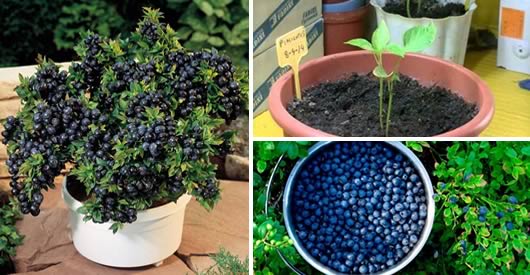Blueberries are not only delicious but also packed with tremendous health benefits. Rich in antioxidants, they help prevent aging, cancer, and various cardiovascular diseases. Additionally, blueberries contribute to controlling diabetes, blood pressure, cholesterol, and are excellent for combating urinary tract infections.
Growing blueberries at home is a straightforward process, and although it takes three years to yield the first fruits, it can save you a significant amount of money. You can start with a bush that already has some fruits if you don’t want to wait. Alternatively, you can begin from seeds following the instructions below.
Firstly, choose the right pot. If you decide to start from seeds, you’ll need to sprout them in a small container (such as a glass). If you’re starting with a young plant, use a larger pot.
For a young plant, a 20-liter pot is ideal. When the plant matures, around the fourth year, you’ll need a pot ranging from 60 to 75 liters.
During winter, pots don’t provide the same protection from the cold as the ground does, so it’s recommended to insulate them by applying hay at the bottom.
Blueberry plants thrive in acidic soil with a low pH (between 4.5 and 5). To achieve acidic soil, you can add peat, cottonseed meal, or a compost made from bark and pine leaves.
Blueberries start bearing fruit after the third year. Most blueberry plants are capable of self-pollination, but for assurance, you can plant two plants together from different crops.
Blueberries require a lot of sunlight. Water them frequently, but they won’t grow well if the soil is consistently moist. Use lightweight soil with good drainage.
Blueberries are a versatile fruit, ideal for sweet and healthy preparations. Growing them at home not only provides a fresh supply but also adds a touch of nature to your space.
